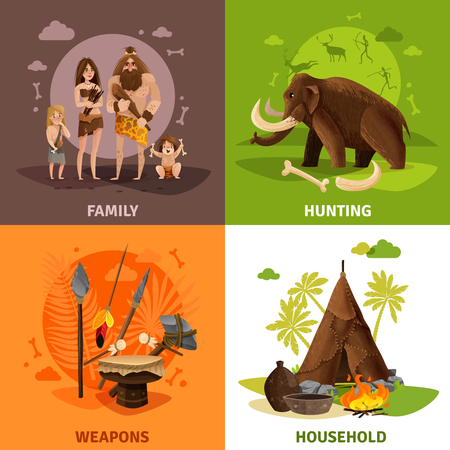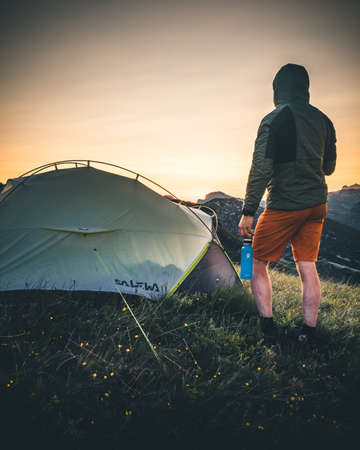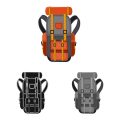1. Understand Your Camping Needs
Before you start shopping for a budget-friendly tent that stands the test of time, take a step back and assess your camping needs. Think about where you’ll be camping most often—are you planning weekend getaways at local campgrounds, backpacking trips in national parks, or family outings at music festivals? The location will influence the features you need, such as ventilation, bug protection, and waterproofing. Next, consider when you’ll be using your tent. If your adventures are mainly during summer, lightweight materials and ample airflow might top your list. For shoulder seasons or unpredictable weather, look for tents with sturdy poles and rainflies to handle wind and rain. Lastly, reflect on how you camp. Solo backpackers have different requirements than families or groups; space, weight, and ease of setup all come into play. By clearly defining where, when, and how you plan to use your tent, you can quickly filter out options that don’t fit your style or local weather conditions—saving both money and hassle down the road.
2. Set a Realistic Budget Range
When searching for a budget-friendly tent that stands the test of time, it’s tempting to focus only on the lowest prices. But in the U.S., where outdoor gear quality can vary widely, smart shoppers know that affordability and value need to work hand-in-hand. Before you start shopping, take some time to figure out what you can realistically spend—without sacrificing those must-have features that make camping enjoyable and safe.
Balance Affordability with Value
Instead of just looking for the cheapest option, think about what you’re really getting for your money. A rock-bottom price might look good up front, but if the tent leaks during a Midwest thunderstorm or the zippers break after one trip to Yosemite, you’ll end up spending more in the long run. Focus on tents that offer solid materials, reliable weather protection, and essential features within your price range.
Determining Your Budget Range
Start by considering how often you’ll use your tent and in what conditions. Are you an occasional summer camper or planning regular trips across different climates? Here’s a quick breakdown to help guide your expectations:
| Budget Range (USD) | Suitable For | Typical Features |
|---|---|---|
| $50–$100 | Casual/Backyard Camping | Basic weather resistance, minimal ventilation, basic poles |
| $100–$200 | Weekend Warriors/Families | Better durability, improved waterproofing, easy setup, more space options |
| $200–$350 | Frequent Campers/Challenging Conditions | High-quality fabrics, reinforced seams, strong poles, advanced ventilation and storage features |
Key Features You Shouldn’t Compromise On
- Weatherproofing: Look for sealed seams and rainfly coverage.
- Zipper Quality: Durable zippers prevent frustration and early failure.
- Pole Strength: Aluminum poles last longer than fiberglass.
- Ventilation: Essential for humid U.S. summers.
A Practical Tip:
If your ideal tent is just outside your budget, check for seasonal sales at major retailers like REI or Dick’s Sporting Goods. Sometimes last year’s models are deeply discounted without sacrificing quality.

3. Check Key Durability Indicators
When youre searching for a tent that fits your budget but also stands up to the elements, its crucial to pay close attention to durability features. These indicators will help you separate a long-lasting investment from a cheap tent that might fail after just a few trips.
Material Matters
The fabric is your tent’s first line of defense against weather and wear. Look for tents made with ripstop nylon or polyester—these are lightweight but tough enough to resist tearing. Avoid overly thin materials, as they’re more likely to develop holes or leaks over time. If possible, check the denier rating (a measure of fiber thickness): higher numbers generally mean greater strength.
Inspect the Stitching
Seams can be a weak point in many budget tents. Examine them closely—double stitching or reinforced seams are signs of quality construction. Seam taping is another bonus; it helps prevent leaks during rainy nights. Don’t forget to gently tug on the seams to ensure nothing feels loose or poorly finished.
Test the Zippers
A stuck or broken zipper can ruin your camping experience fast. Good tents use heavy-duty zippers that glide smoothly and don’t snag easily. Metal zippers tend to last longer than plastic ones, though some high-quality plastics are also reliable. Make sure zipper pulls are easy to grip, even if you’re wearing gloves on a chilly night.
Pole Strength
Tent poles provide the structure that keeps your shelter standing strong against wind and rain. Aluminum poles are usually stronger and more durable than fiberglass, but both can work well if designed properly. Check that pole connections feel solid and that there’s no visible cracking or warping.
Final Tip: Try Before You Buy
If you can, set up the tent in-store or at home before your trip. This hands-on test lets you spot any weak points and ensures all components work together as they should. Paying attention to these key durability indicators may take a little extra time upfront, but it’s worth it for peace of mind on your next outdoor adventure.
4. Consider Size and Comfort
When you’re shopping for a budget-friendly tent that’s built to last, it’s easy to focus just on price or durability. But don’t forget: the right size and comfort level can make or break your camping trip. Before clicking “add to cart,” think about how many people—and how much gear—need to fit inside. Tent manufacturers often label tents by capacity (like “2-person” or “4-person”), but those numbers are usually based on tight sleeping quarters, not extra room for backpacks or stretching out.
How Much Space Do You Really Need?
Start by counting everyone in your group, then consider if anyone needs extra space (for example, kids who toss and turn, or tall adults). Next, factor in your gear: will you need to keep backpacks, boots, or even a dog inside the tent? Here’s a quick guide to help you decide:
| Tent Capacity | Best For | Comfort Level |
|---|---|---|
| 2-Person | Solo camper with lots of gear OR 2 people who pack light | Cozy; minimal extra space |
| 3-Person | 2 people plus gear OR small family (parent + child) | Comfortable for two; snug for three adults |
| 4-Person | Family of 3-4 OR 2-3 adults with extra room for gear | Roomy for two; manageable for four with less gear |
| 6+ Person | Larger families or groups; car camping setups | Spacious, with room dividers sometimes included |
Other Comfort Features to Look For
- Headroom: Dome tents usually have less vertical space than cabin-style tents. If you want to stand up while changing clothes, look for tents with higher peak heights.
- Vestibules & Storage: A vestibule is a covered area outside the main sleeping space—perfect for muddy boots and wet gear.
- Ventilation: Mesh windows and roof vents keep air flowing and reduce condensation—a key comfort detail when camping in humid U.S. climates.
- Doors: Multiple doors mean fewer midnight acrobatics when someone needs a bathroom break.
A Practical Tip: Think Beyond the Label
A “budget-friendly” tent isn’t really a bargain if you’re miserable every night. Prioritize a little extra space over squeezing everyone into a minimum-size shelter—it’ll pay off in better sleep and happier campers all around.
5. Read Reviews from Real Campers
If you want to find a budget-friendly tent that truly lasts, don’t just trust product descriptions or flashy marketing. Instead, dig into what real American campers are saying online. Make use of popular U.S.-based outdoor forums like Reddit’s r/CampingandHiking, Backpacking Light, or even Facebook camping groups. You’ll discover honest feedback about how tents hold up in different weather, how easy they are to set up, and whether they survive multiple seasons.
Retailer reviews on sites like REI, Walmart, or Amazon are also goldmines for practical insights. Look for patterns—if dozens of people mention broken zippers or leaky seams, take it seriously. On the other hand, if reviewers rave about a tent’s durability after years of use at national parks or music festivals, that’s a good sign you’re looking at a true value pick.
While every tent can have a dud here and there, focusing on real-world experiences will help you avoid wasting money on gear that only looks good on paper. By letting fellow campers’ stories guide your choice, you’re more likely to invest in a tent that stands up to American adventures—without breaking the bank.
6. Shop Smart and Watch for Deals
Getting the most out of your budget doesn’t mean you have to compromise on quality. In the U.S., savvy campers know that shopping smart is half the battle when choosing a tent that will last. Start by comparing prices at major outdoor retailers like REI, Bass Pro Shops, Cabela’s, and Dick’s Sporting Goods. Each store often carries a slightly different selection and offers regular promotions, so don’t settle for the first price you see.
Consider timing your purchase around off-season sales—late fall and winter are prime times to score deep discounts as stores clear out inventory. Black Friday and Memorial Day sales are also famous for big price drops on camping gear. Don’t forget to check online-only deals and factory outlet websites, where overstocked or last season’s models can be found at a fraction of the original price.
Besides price, look at what’s included in your purchase. Some retailers bundle footprint tarps or repair kits with tents at no extra cost, which adds value and saves money down the line. And always read the warranty policy: reputable brands often offer limited lifetime warranties or robust customer support in case you need repairs or replacement parts. This kind of coverage can make a budget-friendly tent a truly long-lasting investment.
By stacking up these strategies—price comparison, timing your buy, checking for bundled extras, and ensuring solid warranty coverage—you’ll be ready to find a tent that fits both your wallet and your weekend plans for years to come.


